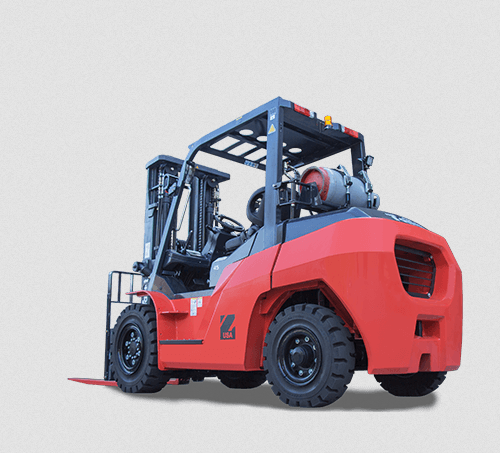
When it comes to optimizing warehouse operations, selecting the appropriate type of forklift is a decision that can significantly impact efficiency and productivity. A well-informed choice not only streamlines material handling processes but also enhances safety and reduces operational costs. Understanding the different types of forklifts available on the market is essential for any business looking to improve its warehousing capabilities.
Understanding the Types of Forklifts
Forklifts come in various types, each designed to cater to specific operational needs. Among the primary categories are internal combustion forklifts and electric forklifts. Internal combustion forklifts are typically powered by either diesel or LPG (liquefied petroleum gas), making them ideal for outdoor applications or environments that require robust lifting capabilities. These machines excel in tough conditions where power and performance are paramount, such as construction sites or large distribution centers.
On the other hand, electric forklifts are becoming increasingly popular in warehouse settings, particularly for indoor operations due to their eco-friendliness and lower noise levels. They are powered by batteries, which not only reduce emissions but also result in lower operating costs over time. Electric forklifts are particularly well-suited for delicate environments where noise and air pollution must be minimized, such as food and beverage warehouses or pharmaceutical facilities.
Evaluating Your Warehouse Needs
Choosing the right forklift requires a thorough assessment of your warehouse's specific needs. Factors such as the size of the warehouse, the types of materials being handled, and the layout of the operational space play crucial roles in determining which type of forklift is most suitable. For instance, if the warehouse has narrow aisles and requires maneuverability, electric forklifts might be the better choice because of their compact size and agility.
Additionally, the weight and volume of the loads being moved are essential considerations. Heavy-duty tasks often necessitate the use of robust internal combustion forklifts that can handle significant weights. Conversely, lighter loads may be efficiently managed with electric models, which can offer a more cost-effective solution without compromising performance.
Forklift Capabilities and Features
Each type of forklift comes with its unique set of capabilities and features that can enhance operational efficiency. For example, internal combustion forklifts generally offer higher lifting capacities and are designed to perform in more rugged environments. They typically feature pneumatic tires that provide better traction on uneven surfaces, making them a preferred choice for outdoor applications.
Electric forklifts, in contrast, often come equipped with advanced technology such as regenerative braking systems and smart battery management systems, which optimize performance and extend battery life. Many electric models also allow for easier maintenance due to their fewer moving parts compared to their internal combustion counterparts. This ease of maintenance can translate into reduced downtime and lower overall operational costs.
Safety Considerations
Safety is paramount in any warehouse operation, and the choice of forklift can greatly influence the safety of both operators and personnel. Operators of internal combustion forklifts must be trained to navigate the challenges posed by their power and weight, especially in confined spaces. Forklifts that are powered by diesel or LPG may also require additional safety measures due to potential emissions.
Electric forklifts, while generally safer in terms of emissions, still require operators to be vigilant about battery management, charging protocols, and weight distribution. Both types of forklifts should be equipped with safety features such as lights, alarms, and seatbelts to ensure a secure working environment.
Maintenance and Support
The ongoing maintenance of forklifts is another critical factor to consider. Internal combustion forklifts may require more frequent servicing due to their complex engines and fuel systems. Electric forklifts tend to have lower maintenance demands, but they still require regular checks on batteries and electrical systems to ensure optimal performance.
Understanding the maintenance requirements of each type of forklift will help businesses plan for operational costs and minimize unexpected downtime. Establishing a relationship with a reliable supplier can also provide access to support and service options, ensuring that any issues are resolved quickly and efficiently.
Making the Final Decision
Ultimately, the choice of forklift will depend on a variety of factors tailored to the specific operational needs of the warehouse. By thoroughly evaluating the types of forklifts available, assessing warehouse requirements, considering safety protocols, and understanding maintenance needs, businesses can make informed decisions that enhance efficiency and productivity.
In conclusion, when selecting the right type of forklift for your warehouse, it is crucial to consider various operational aspects and the specific demands of your environment. By partnering with an experienced provider like Tailift Material Handling USA Inc. businesses can ensure they receive tailored solutions that meet their unique requirements while maximizing efficiency and safety in their operations.







Write a comment ...